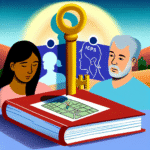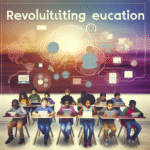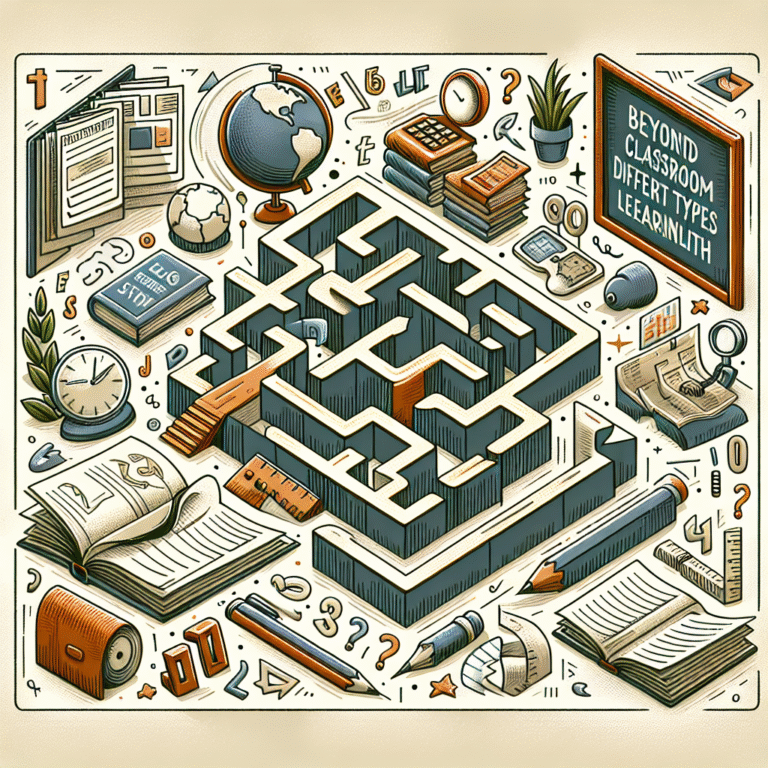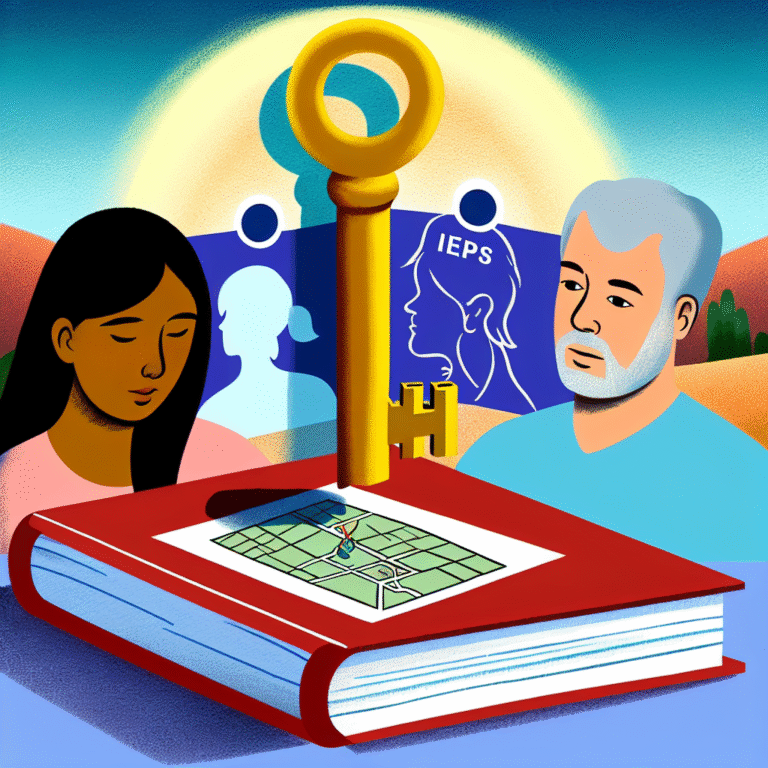
Navigating Challenges: Essential Strategies for Educators to Support Students with Visual Processing Disorders
Introduction
Every child deserves a fair shot at educational success. However, for some students, traditional teaching methods can feel like an uphill battle, especially those grappling with Visual Processing Disorders (VPD). These conditions can significantly hinder a student’s ability to interpret and make sense of visual information, leading to challenges in reading, writing, and even math. Educators play a pivotal role in fostering an inclusive learning environment, and understanding how to effectively support students with VPD is essential.
In this article, we delve into Navigating Challenges: Strategies for Educators to Support Students with Visual Processing Disorders. We’ll cover the nature of VPD, highlight real-world case studies, and propose actionable strategies that educators can employ to uplift these students.
Understanding Visual Processing Disorders
What Are Visual Processing Disorders?
Visual Processing Disorders encompass a range of conditions whereby an individual struggles to interpret visual information effectively. This is not due to issues with eyesight but rather how the brain processes visual stimuli. According to the Learning Disabilities Association of America, children with VPD may have difficulties identifying objects, following visual directions, and understanding visual cues in texts.
Key Characteristics of VPD
- Difficulty with Visual Discrimination: Struggling to differentiate similar-looking letters or objects can hinder reading fluency.
- Poor Visual Memory: Challenges in remembering visual information can impact math skills or recalling details from a text.
- Inefficient Visual-motor Integration: Issues with coordinating visual input with movement can impede writing and drawing abilities.
The impact of these characteristics can be profound, affecting students’ self-esteem, engagement, and overall academic performance.
Real-World Example: Case Study of Tim
Tim, a third-grader who is bright and articulate, faces mounting difficulties in reading due to his undiagnosed VPD. Frequently mixing up letters like "b" and "d," he grows frustrated when attempting to read aloud. Instead of feeling empowered, Tim feels embarrassed and increasingly withdraws from classroom participation. An early diagnosis of VPD, alongside targeted support, could make a significant difference in Tim’s educational journey.
Identifying Visual Processing Disorders in Students
Early Signs and Symptoms
Recognizing the signs of VPD can be crucial for timely intervention. Teachers can be alert to behaviors such as:
- Trouble with reading, particularly when letters or words appear jumbled.
- Difficulty remembering instructions that are visually presented.
- Struggling with handwriting and drawing tasks.
Assessment and Diagnosis
Collaboration with special education professionals or school psychologists is essential. Students may undergo comprehensive evaluations that include:
- Standardized Tests: Assessments designed to evaluate visual-spatial skills and visual-motor integration.
- Observation: Teachers documenting behavior and performance during classroom activities can provide invaluable insights.
Case Study Analysis: Sarah’s Assessment Journey
Sarah, a fourth-grade student, seemed to be averse to reading from a young age. Her teachers observed that she consistently struggled with reading comprehension despite adequate instruction time and support. Following a detailed assessment that included input from special education specialists, Sarah was diagnosed with a Visual Processing Disorder. Armed with the right tools and strategies, her teachers could adjust instructional methods to meet her needs, showcasing the importance of early identification.
Navigating Challenges: Strategies for Educators to Support Students with Visual Processing Disorders
1. Implement Multi-Sensory Learning Techniques
Strategy Overview: Engaging multiple senses enhances retention and comprehension.
- Visual Aids: Use charts, diagrams, and visual organizers to simplify complex ideas.
- Tactile Learning: Incorporate physical activities, such as using letter tiles for spelling, to engage kinesthetic learners alongside visual information.
Case Study Insight: A recent classroom intervention using tactile letter cards allowed students with VPD to physically interact with words, leading to improved spelling accuracy and reading confidence over the semester.
2. Use Technology as an Ally
Strategy Overview: Various technological tools can help reinforce learning.
- Audio-Visual Tools: Explore educational apps that provide auditory support for reading and comprehension.
- Speech-to-Text: For writing tasks, using speech recognition software can alleviate the stress of handwriting.
Benefits Chart:
| Technology | Benefit |
|---|---|
| Audio Books | Enhances comprehension |
| Digital Whiteboards | Supports interactive learning |
| Graphic Organizers | Aids organization of thoughts |
3. Modify Instructional Methods
Strategy Overview: Tailor teaching styles to meet diverse learner needs.
- Chunking Information: Break down large amounts of visual information into manageable parts.
- Clear Visuals: Utilize large print, high-contrast visuals to minimize visual clutter.
4. Foster a Supportive Classroom Environment
Strategy Overview: Create an atmosphere that encourages risk-taking and builds self-confidence.
- Peer Support Systems: Implement buddy systems where students collaborate on group tasks.
- Positive Reinforcement: Celebrate small victories to encourage persistence.
5. Collaborate with Specialists
Strategy Overview: Leverage expert advice to implement effective strategies.
- Regular Consultations: Schedule periodic meetings with speech therapists or occupational therapists who specialize in visual processing.
- Professional Development: Participate in workshops and training programs focused on VPD.
Conclusion
In the journey of Navigating Challenges: Strategies for Educators to Support Students with Visual Processing Disorders, we see that every student holds a wealth of potential, despite the obstacles posed by VPD. By recognizing the signs and implementing targeted strategies that engage and support these learners, educators can help them flourish academically and emotionally.
As we conclude this exploration, it’s essential to remember that a student’s struggle with VPD is not an insurmountable barrier; it’s an opportunity for innovation in teaching. Let us inspire every learner to push past their challenges, fostering a classroom culture that celebrates resilience and determination.
FAQs Section
1. What are common signs of Visual Processing Disorders?
Common signs include difficulty reading, trouble following visual directions, frequent letter or number reversals, and problems with handwriting.
2. How can I differentiate between VPD and other learning disabilities?
While VPD primarily affects visual processing, it can sometimes overlap with other learning disabilities like dyslexia. A comprehensive assessment by a psychologist or learning specialist is recommended for accurate diagnosis.
3. What accommodations can be made for students with VPD?
Accommodations may include extended time on tests, using audio books or visual aids, and providing alternative methods for demonstrating knowledge, such as oral presentations.
4. Can visual processing skills be improved?
Yes, with tailored interventions, practice, and of course, patience, students can improve their visual processing skills significantly over time.
5. How can parents support their child with VPD at home?
Parents can support their child by creating a conducive homework environment, using visual aids, and encouraging open communication about their learning experiences.
6. What resources are available for educators?
Numerous resources exist for educators, including specialized training programs, online webinars, literature on VPD, and networking with other teachers and special education professionals focused on inclusive learning.
By embracing strategies that consider the unique needs of students with Visual Processing Disorders, educators can revolutionize classroom experiences, ensuring that every learner receives the support necessary for academic and personal success.






